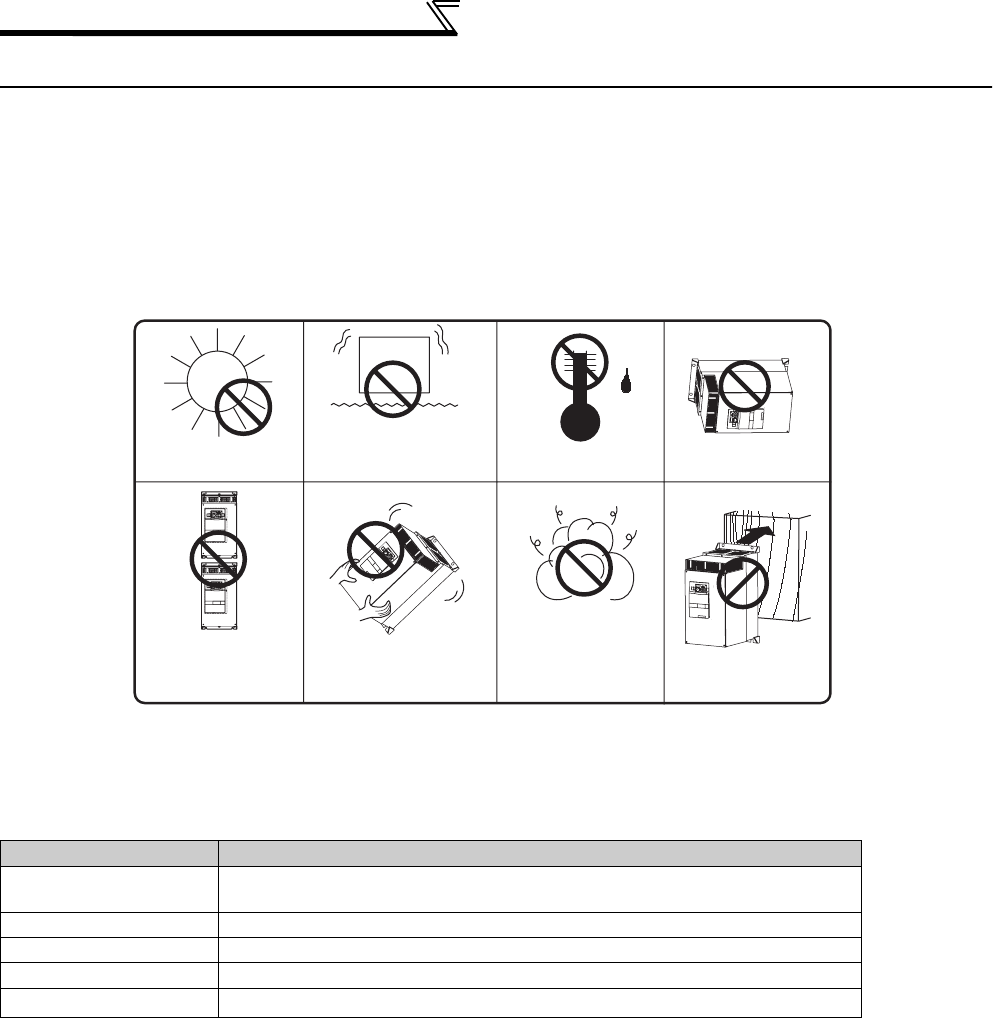
6
Installation of the inverter and enclosure
design
1.4 Installation of the inverter and enclosure design
When an inverter enclosure is to be designed and manufactured, heat generated by contained equipment, etc., the
environment of an operating place, and others must be fully considered to determine the enclosure structure, size and
equipment layout. The inverter unit uses many semiconductor devices. To ensure higher reliability and long period of
operation, operate the inverter in the ambient environment that completely satisfies the equipment specifications.
1.4.1 Inverter installation environment
The inverter consists of precision mechanical and electronic parts. Never install or handle it in any of the following
conditions as doing so could cause an operation fault or failure.
As the inverter installation environment should satisfy the standard specifications indicated in the following table,
operation in any place that does not meet these conditions not only deteriorates the performance and life of the
inverter, but also causes a failure. Refer to the following points and take adequate measures.
Environmental standard specifications of inverter
Item Description
Surrounding air
temperature
-10°C to +50°C (non-freezing)
Ambient humidity 90% RH maximum (non-condensing)
Atmosphere Free from corrosive and explosive gases, dust and dirt
Maximum Altitude 1,000m or less
Vibration
5.9m/s
2
or less at 10 to 55Hz (directions of X, Y, Z axes)
Direct sunlight
High temperature,
high humidity
Horizontal placement
Mounting to
combustible material
Oil mist, flammable
gas, corrosive gas,
fluff, dust, etc.
Transportation by
holding the front cover
Vertical mounting
(When installing two or
more inverters, install
them in parallel.)
Vibration (5.9m/s
2
or more
at 10 to 55Hz (directions of
X, Y, Z axes))


















